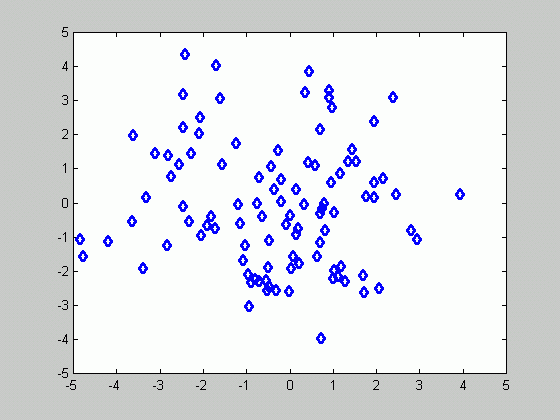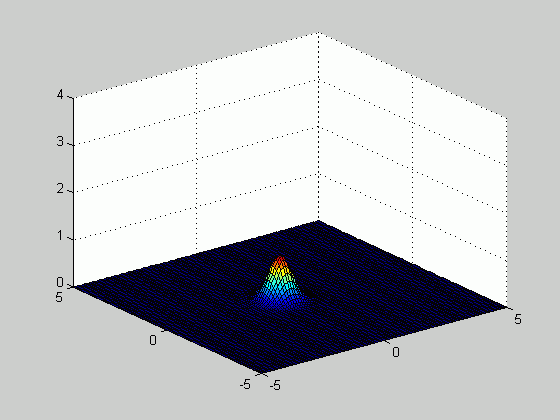In the previous section we saw how the class-conditional density functions can be estimated in a one-dimensional normal case. Here we'll generalize the ideas and develop the formulas for a multi-dimensional case. The details will be skipped, because the arguments and proofs are quite similar to those in the one-dimensional case.
As before, we'll assume that the p(x|X) is distributed normally and
the covariance matrix
![]() of the distribution
is known. That is the only parameter to be estimated is the mean vector
of the distribution
is known. That is the only parameter to be estimated is the mean vector
![]() . As in the one-dimensional case, we assume
that the unknown parameter
. As in the one-dimensional case, we assume
that the unknown parameter
![]() is distributed normally with the mean
is distributed normally with the mean
![]() and the covariance matrix
and the covariance matrix
![]() . In other words,
. In other words,
![]()
To remind you, we are dealing with the
multi-dimensional case, so the means
![]() and
and
![]() are vectors.
are vectors.
The probability density function p(
![]() |X)
can be computed by using Bayes rule in the following manner:
|X)
can be computed by using Bayes rule in the following manner:
![]()
where n is the number of samples,
![]() is the mean vector and
is the mean vector and
![]() is the covariance matrix. Therefore,
p(
is the covariance matrix. Therefore,
p(
![]() |X) is also distributed normally:
|X) is also distributed normally:
![]()
By equating coefficients it's easy to obtain:

where as before
![]()
As for the estimate of the class-conditional density function, it can be computed as before by means of integration:
![]()
where
![]()
It follows that
![]()
In order to illustrate the formulas above, we'll have a look at the two-dimensional case.
Suppose that

The figure below presents a set of 100 samples.

Based on the samples above, we plotted the density function
p(
![]() |X) as
number of samples increased from 20 to 100. The figure below
illustrates how the estimated density function becomes sharper as the number of
samples increases.
|X) as
number of samples increased from 20 to 100. The figure below
illustrates how the estimated density function becomes sharper as the number of
samples increases.
